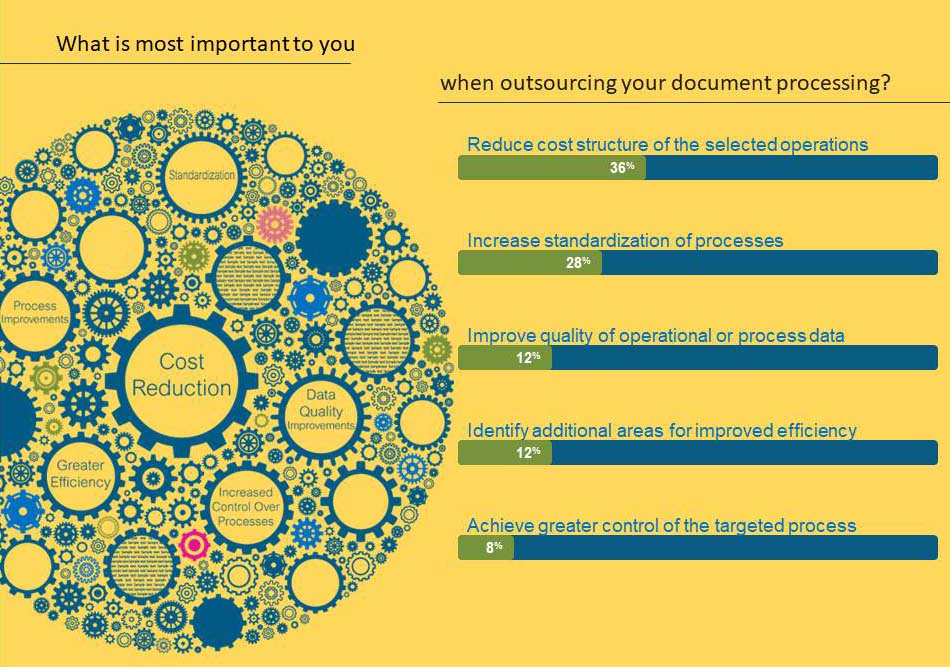
Client Loyalty
Outsourcing to reduce cost may be one of the important reasons for selecting a Business Process Outsourcer, but it’s not enough to keep one.
In a March 2017 poll of 60 outsourcing clients by Horses for Sources (HfS), 44% of participants felt their BPO wasn’t providing sufficient value (20 percent felt their BPO offered cheap labor, but not much beyond that while 24% said their provider promised a lot, but constantly disappoints).
These are stark realities when BPOs simultaneously face ever-mounting pressure to deliver greater margins to their investors and the specter of offshoring becoming decidedly more difficult (e.g., natural disasters, infrastructure problems and political instability).
Cost Structure Reduction
In part of an independent survey underwritten by Parascript conducted this May 2017, executives from 50 enterprise companies were asked their top priority in outsourcing their document processing. Over a third wanted to reduce the cost structure of their operations; a close second at 28 percent were looking for greater process standardization, while improved quality of data and identifying additional areas for improved efficiency tied at 12 percent; and 8 percent were looking for greater control or visibility into their processes.
While enterprise companies may not return to in-house processing due to cost and efficiency, outsourcing is definitely undergoing significant transformation. HfS expects “to see a lot of chopping and changing of service providers in this volatile market” and while Everest Group sees strong growth in the outsourcing market, it remains in a state of flux.
Looking Beyond Savings
For both BPOs and their clients, establishing real partnerships is the key through:
- Developing clearly defined, shared objectives
- Providing heightened visibility into customer segments to meet specific group’s needs
- Offering innovative technology and process improvements that increase quality, savings, efficiencies, and add competitive advantage.
Underpinning the necessity of a partnership where the BPO increases margins and the client’s receives expanded services are (1) automation and when done correctly, (2) the resulting easily accessible, relevant, quality data.
Risk vs Reward
So how should BPOs and their clients approach innovating through automation and leveraging quality data? One way to start is with outsourcing specific less-critical projects, ironing out any challenges and then leveraging the successful implementations as automation templates for more critical projects.
Perhaps the most important aspect to consider when growing any outsourcing partnership is benchmarking your document processing as it exists today and then establishing the capabilities to consistently quantify and evaluate your document processing and resulting data throughout its transformation due to automation.
If you found this article interesting, you might find this video useful, which highlights what Parascript offers:
